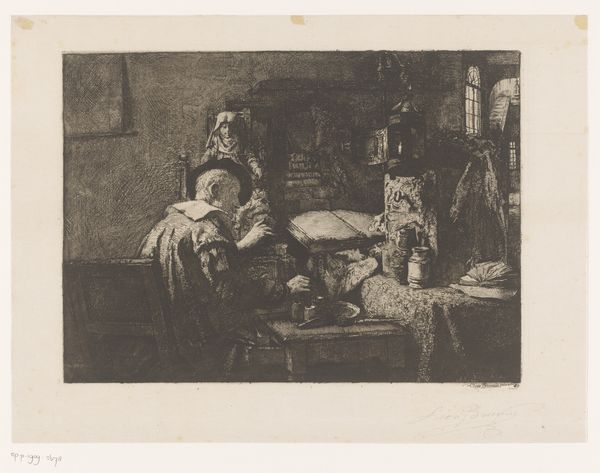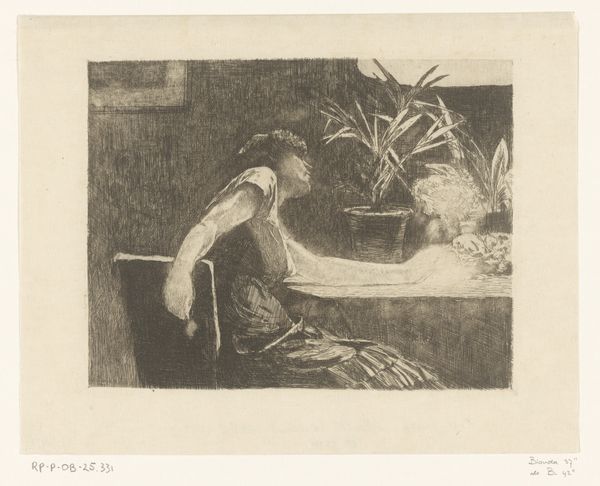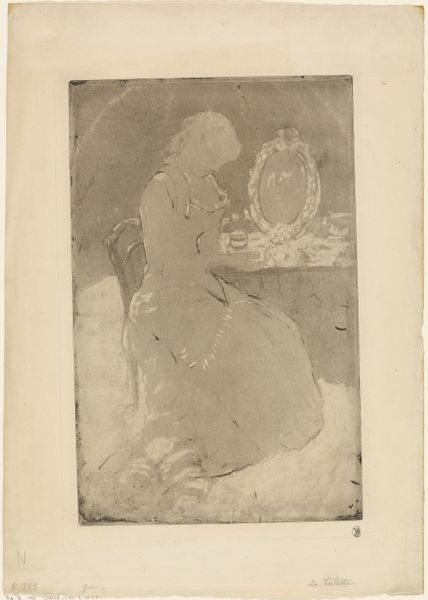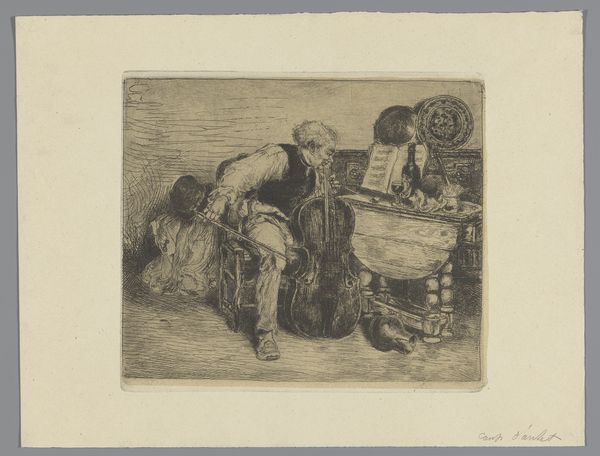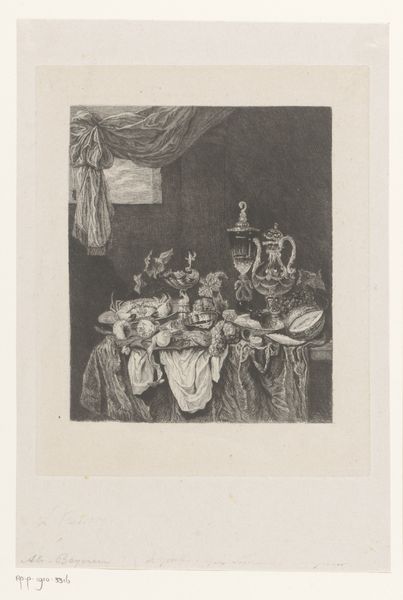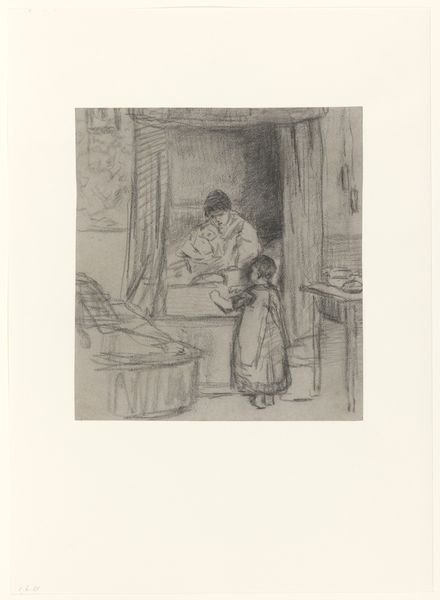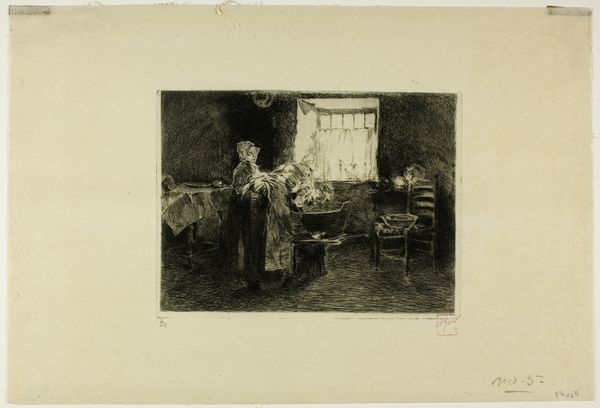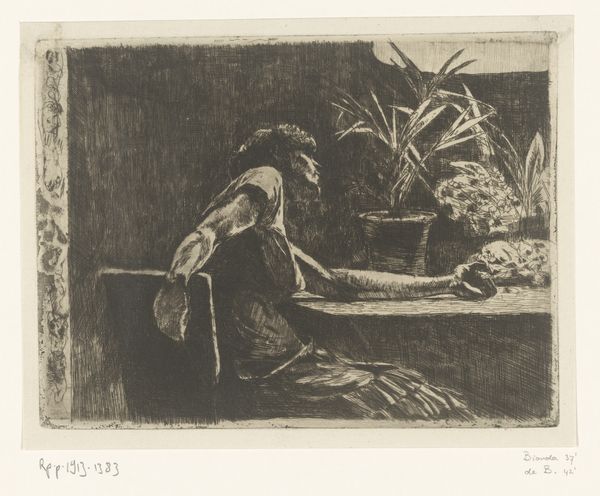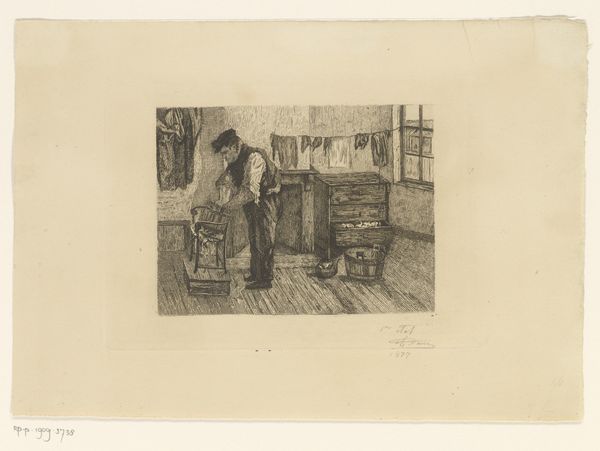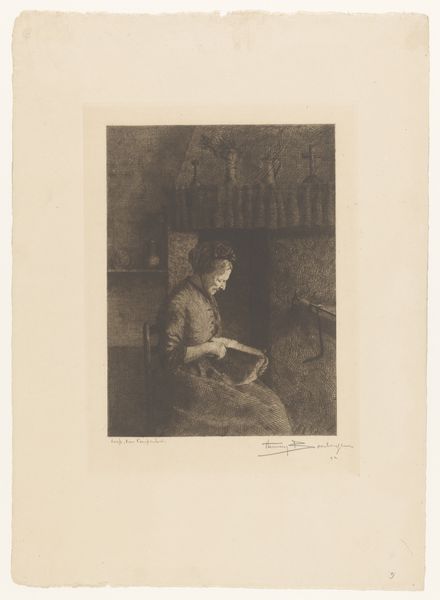
drawing, print, etching, paper
#
portrait
#
drawing
# print
#
french
#
etching
#
figuration
#
paper
#
france
#
post-impressionism
Dimensions: 269 × 445 mm (image/plate); 454 × 608 mm (sheet)
Copyright: Public Domain
Curator: This is Paul Gauguin's etching, "The Woman with Figs," likely created between 1894 and 1899. It’s printed on paper. Editor: It has a very insular, quiet mood, almost like looking into someone's memory. The composition feels separated into interior and exterior spaces, adding to that sense of contemplation. Curator: The printmaking process itself contributes to this effect, wouldn’t you say? The etching lines create a rough, almost grainy texture that softens the image, pulling it away from stark realism. Gauguin was really interested in how the properties of a medium could evoke a certain kind of lived experience. He wanted artmaking to reveal that labor. Editor: Indeed. Figs in art and literature, and even psychoanalysis, can represent fertility and sexuality, the harvest, and of course, temptation and the loss of innocence. Note how they are placed so close to the woman's hands – what is her relationship to the symbolic potential of these fruits? Curator: I’m particularly interested in what appears to be the woman's striped shirt. In looking at this piece, one could also draw attention to questions of the division of labor within a domestic sphere. What did it mean to engage in fig cultivation in that society? What value was assigned to the laborers who were producing these fruits, or even this artwork, at that time? The very materiality of clothing as something produced carries with it social histories, don’t you think? Editor: I do. Also note the house in the background—the threshold of the doorway mirrors the tension between her indoor space and the outer world. I keep thinking about how this composition relates to the woman’s psychological and emotional states. Perhaps, by making this association to the exterior with thresholds and domesticity, the artist is inviting us to explore that, too. Curator: Yes, both ways of thinking have merit, as always. These methods of reflecting on artworks give different dimensions to them, so that the same object becomes more layered, multifaceted, depending on our critical approaches. Editor: Exactly, by tracing the symbolic links within an artwork, we understand better our cultural lineage.
Comments
No comments
Be the first to comment and join the conversation on the ultimate creative platform.
